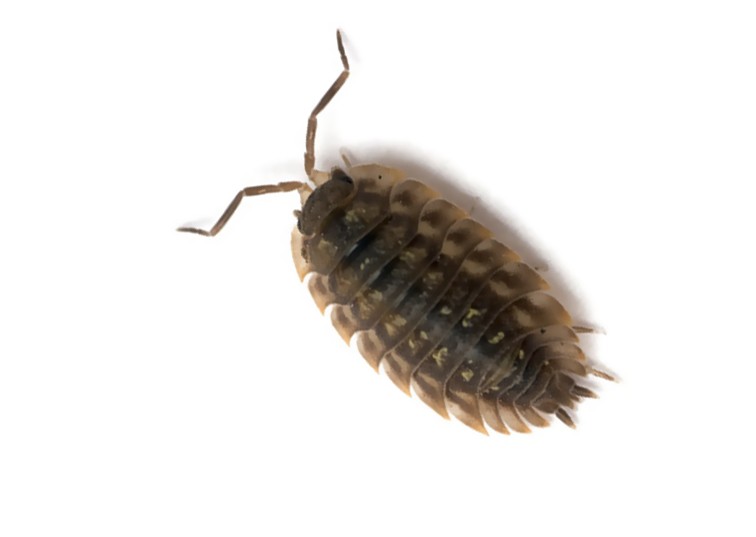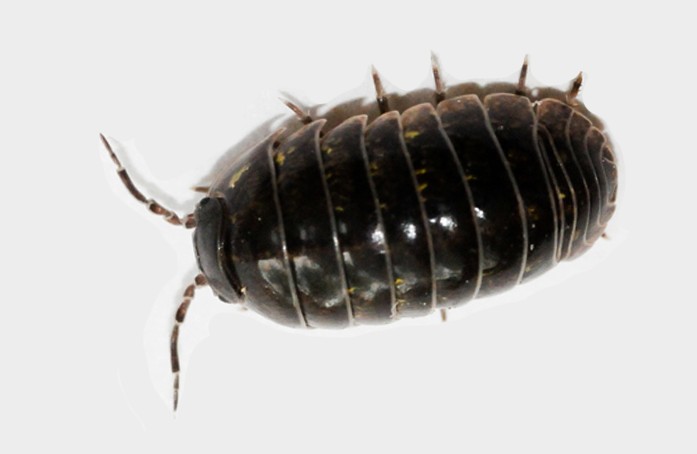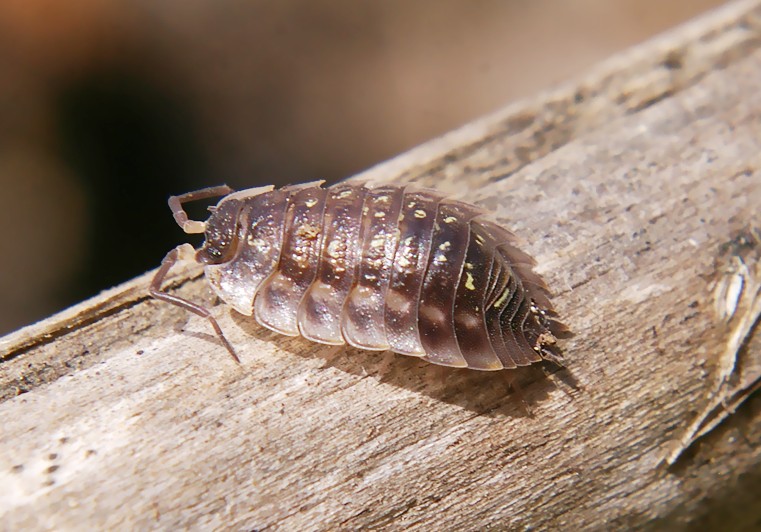Sowbug
Sometimes, we mistake an imitation for the real. The same applies to sowbug, which a lot of people mistake for an insect when they are actually not insects. Well, whatever they are, they are capable of causing some menace if not properly checked.
What are Sowbugs?

Picture of a Sowbug
Sowbugs otherwise referred to as isopods, are small arthropods which people sometimes mistake for insects. These crustaceans look like shrimp and lobsters but are able to live on land (the only crustaceans to do so).
Appearance and Size
Sowbugs have an oval body but are hollow or flat beneath and convex above. They are capable of growing up to 19 mm long and are usually pale brown to dull blue in color. They have a small head and abdomen. They equally possess eyes and prominent antennae that are segmented. Sowbugs have large thorax made up of 7 hard individual plates that overlap. They have seven pairs of legs.
Sowbugs also have two prominent appendages from their abdomen that closely look like tails. Under their bodies are gills for absorbing oxygen. These gills are kept moist with the help of moisture which they mostly rely on. On the average, the size of a sowbug is between ¼ and ½ inch in length.
Biology and Habitat
Sowbugs are not known to be destructive pests. However, they move into window frames, doorways and under slabs which easily accumulate moisture. The moisture may be a result of leaks or condensation and gives rise to mildew, mold and algae, which provide food for the sowbug.
These tiny creatures can sometimes become a nuisance especially when established colonies of sowbugs move into your house in search of relief from heat or cold if the level of moisture goes up.
They reproduce at least twice a year and carry their young ones until they can adapt and blend with other members of the colony. They carry out their feeding, especially at night. The colony usually changes location to adjacent areas when they begin to run out of food supply.
Behavior
Sowbugs belong to the class of crustaceans known as isopods and live on land. Their mode of respiration is through the gills. Since they don’t live in the water, they are constantly in search of damp or wet places to help keep their gills damp and enhance breathing.
Sowbugs live off rotten plants, though their diets are a bit broad. They live in their food (they are mostly found chewing damp, rotten plants). They dig little holes in the earth and on potatoes.
Sowbugs do not generally love lights. So, when you remove those dark papers and other coverings shading them, they run back under the leaves or potatoes to avoid bright lights. They stay away from the views of predators such as birds by remaining in dark places.
Though some sowbugs roll into a ball when threatened, the vast majority would play dead. When picked up, a sowbug may remain on its back and slightly roll itself up for a minute before it moves and then turns over again.
Are Sowbugs dangerous?
Sowbugs are not harmful because they do not sting, bite or infest clothing, food or wood, and they do not pass on any disease to humans. One advantage they bring to your garden is that they break down organic matter thereby making nutrients available to garden plants. Since they indirectly support your garden plants, they should not be seen as enemies.
When sowbugs persistently infest your home, it is a sign that your home has a serious moisture problem that needs to be corrected immediately. It could also be that they are getting some food supply around the home.
How to get rid of Sowbugs
An increase in the population of sowbugs around your home is a pointer to a high level of moisture in the area. This will give rise to or worsen already existing mildew, wood rot, or even create an atmosphere that is conducive for insects to procreate. What then should you do?
- Get rid of excess debris and vegetation around the exterior perimeter of your home. Clean up all leave debris around your house since they are known to retain moisture and harbor bugs. Also, clean up all downspouts and rain gutters and ensure they are in good shape.
- Reduce the level of humidity or moisture indoors: Make use of stove hood vent fans, bathroom fans, or vent clothes dryers outside. Ensure that you ventilate crawl spaces and attics to keep them dry.
- Employ caulking gun instead of chemicals in closing crevices and cracks on the ground.
- Avoid the use of built-in planters around the house. They serve as a good ground for bugs to procreate. Planter boxes on decks tight against the house and window planters will encourage bugs and insects to breed.
- All your doors, both the ground level to the outside, should be weather-stripped. Also, ensure the doors to your garage are weather-stripped if the garage is a vital part of the house or attached to it.
- All structural woods around the house should be above soil level to prevent them from rotting easily.
- Inspect your garage and the bottom level for any visible sign of moisture problems. Make sure they are fixed as soon as possible.
- Diatomaceous earth: Use them around cracks and crevices and ensure they remain dry. Various domestic pesticides contain diatomaceous earth, which serves as an ecological way of controlling insects and related creatures. The diatomaceous earth is a fine powder prepared from crushed microscopic marine fossils. When applied to the home, they scratch the outer skin of any insect that crawls over them thereby making the insect dehydrate and die. They are relatively safe for humans, but care must be taken not to inhale the dust.
Pictures of Sowbugs
Take a look at some of the pictures of sowbugs:



Conclusion
Sowbugs are not harmful to us. They are actually helpful in breaking down organic matters in your garden and improving soil fertility. However, they can get out of control when the level of humidity or dampness around your house becomes too high.
Taking the various steps we have enumerated in this post will help you in controlling these creatures should there be any need to do so. Remember that taking care of the dampness level permanently will better control sowbugs rather than the use of chemicals which only have a temporary control over them.
